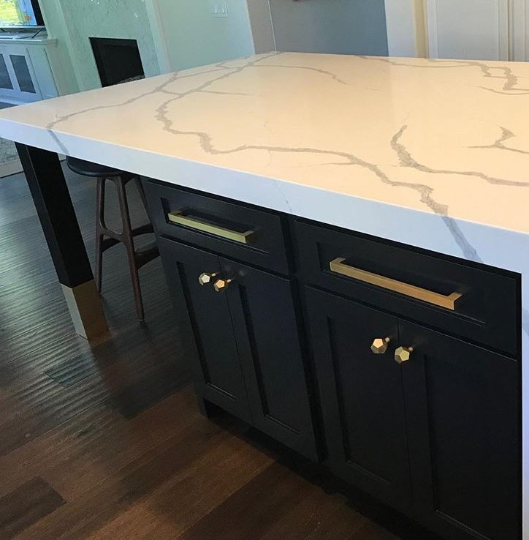Attain the Perfect Equilibrium of Form and Function with Legs For Kitchen Island
Attain the Perfect Equilibrium of Form and Function with Legs For Kitchen Island
Blog Article
Essential Factors to Take Into Consideration When Picking Legs For Cooking Area Island
Selecting the appropriate legs for a kitchen area island involves a cautious evaluation of several factors that can substantially influence both performance and aesthetic appeal. As we discover these elements, it ends up being clear that each decision can have significant effects for the overall kitchen area experience.
Product Options
When selecting legs for a cooking area island, understanding the numerous material choices is crucial for accomplishing both visual allure and structural stability (Legs For Kitchen Island). The selection of product considerably affects not just the resilience of the island however additionally its overall design and performance
Timber is a popular choice, using heat and convenience. Strong woods, such as oak or maple, provide strength and can be discolored or painted to match the kitchen area style. Steel legs, frequently made from stainless steel or wrought iron, add a modern-day and commercial feeling while ensuring resilience and stability. These materials are resistant to put on and can sustain significant weight, making them ideal for larger islands.
One more option is engineered products, like MDF or plywood, which can be extra cost-efficient while still supplying a variety of surfaces. They may not provide the very same degree of stability as solid timber or steel. Legs For Kitchen Island. Lastly, products such as acrylic or glass can develop a contemporary look, though they might need additional assistance to make certain stability.
Ultimately, the selection of material for kitchen island legs should align with the wanted performance and the overall motif of the kitchen area.
Style and Style

When taking into consideration design, the form and coating of the legs are critical. Tapered legs can provide a sense of lightness and elegance, while thicker, much more robust legs can convey strength and security. In addition, the surface-- be it repainted, stained, or all-natural-- must match the cabinets and counter top materials to produce a unified look.
Furthermore, the design of the legs can also mirror individual preference. Custom-made or ornamental legs, such as those featuring intricate makings or one-of-a-kind geometric forms, can work as centerpieces, adding personality and individuality to the kitchen area. Eventually, the right selection will certainly not only enhance functionality yet likewise elevate the visual charm, making the kitchen area island a standout feature of the home.
Elevation Factors To Consider
Choosing the proper height for kitchen area island legs is crucial, as it straight influences both performance and convenience. The basic elevation for a kitchen island usually varies from 36 to 42 inches, aligning with usual countertop heights.

It is also necessary to make up individuals' heights and choices. Personalizing the height can make sure a comfortable experience for all member of the family, making the kitchen area island a more functional and delightful area.
Weight Support
Making certain sufficient weight assistance for kitchen area island legs is vital for both safety and security and performance. The cooking area island typically serves several purposes, consisting of food preparation, dining, and added storage, demanding a robust assistance structure. When choosing legs, it is crucial to think about the overall weight capability called for based on the island's meant usage and the materials that will certainly be positioned on it.
The option of product for the legs plays a significant function in their weight-bearing capacities. Strong wood, metal, and sturdy composites normally give exceptional toughness contrasted to lighter materials. Furthermore, the layout of the legs-- whether they are straight, tapered, or have a pedestal form-- can affect their capacity to distribute weight efficiently throughout the framework.
Moreover, the leg placement must be purposefully intended to enhance stability. Legs positioned at the edges or with a bigger base can much better sustain much heavier tons. Always get in touch with the producer's requirements pertaining to lots limits to make certain that the legs can maintain the desired weight without jeopardizing safety and security. In summary, picking cooking area island legs with ample weight assistance is vital for producing a useful and secure cooking room.
Installation and Upkeep
Appropriate installation and upkeep of kitchen island legs are essential for making sure longevity and security. This frequently entails protecting the legs to the island base making use of proper bolts, making sure that the legs are degree and lined up.
As soon as set up, normal maintenance is required to maintain the integrity and look of the legs - Legs For Kitchen Island. For wooden legs, regular cleansing with a damp fabric and application of suitable wood gloss can prevent wetness damages and maintain their surface. Steel legs may call for a mild cleaning option to remove grease and gunk, adhered to by a dry fabric to avoid rust development
Additionally, check the legs regularly for signs of wear or damage, such as fractures or loosened joints. Tightening up screws or screws as required can read here additionally lengthen the life-span of the legs. By sticking to these installation and maintenance practices, homeowners can guarantee that their kitchen area island stays strong and visually appealing for many years to find.
Final Thought

Aesthetic coherence is critical in choosing the design and layout of legs for a kitchen island, as these elements considerably affect the total setting of the space. Tapered legs can offer a sense of lightness and sophistication, while thicker, extra durable legs can convey strength and stability.Choosing the suitable height for kitchen area island legs is important, as it straight Visit This Link affects both capability and convenience. In recap, choosing kitchen area island legs with appropriate weight assistance is necessary for developing a useful and secure cooking area.
In final thought, choosing legs for a kitchen area island necessitates careful consideration of various variables, consisting of product choices, style, height, weight assistance, and installment.
Report this page